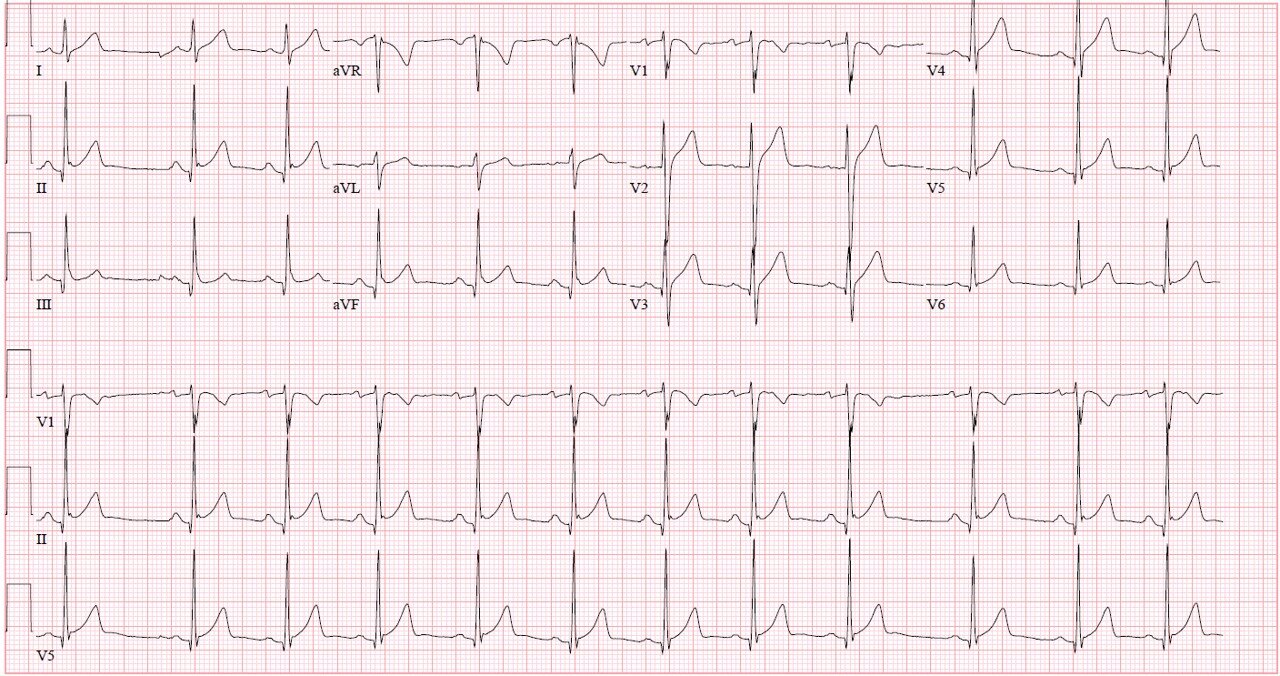A 21-year-old male presents with altered mental status after a vehicle accident

What phenomenon explains the ST elevations in this ECG? What are the features of this condition? What is the clinical significance of this phenomenon?
Watch Video Summary
What phenomenon explains the ST elevations in this ECG?
(Benign) early repolarization (BER) or the J wave pattern.
What are the features of this condition?
Features include diffuse ST elevations that are most pronounced in the precordial leads (typically V2-5) and in proportion to the amplitude of the QRS complex. The degree of ST elevation in V6 should be less than 25% the height of the QRS.1 J point notching (i.e. “fishhook”) can be seen (Figure). The T waves should be concordant (same direction as QRS), and there should not be any reciprocal changes.2

Figure. ST elevation can be clearly seen in the above leads. Lead II has J point notching (i.e. “fishhook”), characteristic of early repolarization.
What is the clinical significance of this phenomenon?
BER has traditionally been considered benign, but newer data suggests that the prevalence of the J wave pattern is higher among patients with idiopathic ventricular fibrillation. It is unclear, however, whether this finding has any significance among asymptomatic individuals.3
Pearls for Urgent Care Management
- Features of early repolarization include diffuse ST elevations that are most pronounced in the precordial leads (typically V2-5) with J point notching.
- When early repolarization is recognized, there are no specific urgent care management recommendations.
- If reciprocal changes or ST-segment convexity are present, or the patient presents with symptoms worrisome for acute coronary syndrome, transfer to a higher level of care is warranted.
References
- Ginzton LE, Laks MM. The differential diagnosis of acute pericarditis from the normal variant: New electrocardiographic criteria. Circulation. 1982;65(5):1004-1009. doi:10.1161/01.CIR.65.5.1004
- Wagner GS, Strauss DG. Marriott’s Practical Electrocardiography. 12th ed. Lippincott Williams & Wilkins; 2014.
- Haïssaguerre M, Derval N, Sacher F, et al. Sudden Cardiac Arrest Associated with Early Repolarization. New England Journal of Medicine. 2008;358(19):2016-2023. doi:10.1056/NEJMoa071968

